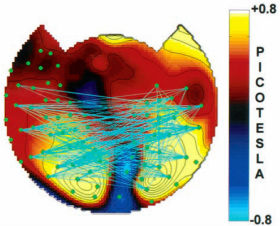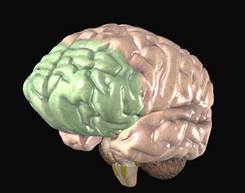Cognitive neuroscience is the study of the biological underpinnings of our cognition and consciousness. Since liology is based on the experience of our embodied life, there is some important overlap.
In recent years, some leading cognitive neuroscientists have begun to understand the activities of the brain and nervous system in terms of dynamical systems theory. Their findings form the basis of the linkage between cognitive neuroscience and liology. What follows is a summary of shared principles and some of the implications of their findings for liology.
In recent years, some leading cognitive neuroscientists have begun to understand the activities of the brain and nervous system in terms of dynamical systems theory. Their findings form the basis of the linkage between cognitive neuroscience and liology. What follows is a summary of shared principles and some of the implications of their findings for liology.
SHARED PRINCIPLES
consciousness consists of dynamic patterns

Leading cognitive neuroscientists argue that consciousness is not reducible to a set of neurons or any particular place in the brain. Rather, it is viewed as a process, not a thing or a location.
Consciousness is understood as an ever-changing dynamic pattern of neuronal assemblies in space and time.
This principle is consistent with the foundational idea of liology, that our universe is comprised of li and qi. In this case, the neurons of the brain represent the qi, and the dynamic patterns formed by their firing correspond to the li of consciousness.
Consciousness is understood as an ever-changing dynamic pattern of neuronal assemblies in space and time.
This principle is consistent with the foundational idea of liology, that our universe is comprised of li and qi. In this case, the neurons of the brain represent the qi, and the dynamic patterns formed by their firing correspond to the li of consciousness.
the brain is a self-organized system
|
In the words of one neuroscientist, “the brain is fundamentally a pattern-forming, self-organized, dynamical system poised on the brink of instability” – “self-organizing principles lie at the level of patterns themselves, supported by a multitude of different kinds of material substrates and mechanisms.”
The realization that our consciousness is formed by the same principles of self-organization that form all living systems on the earth is viewed as an important basis of liology. |
consciousness is an emergent, irreducible whole
The world-renowned neuroscientist Michael Gazzaniga writes: "The
brain... can be understood as a complex system or network, in which
mental states emerge from the interaction between multiple physical and
functional levels." In the words of another leading researcher: "Consciousness
is the most striking (and difficult) example of an emergent phenomenon."
A key characteristic of consciousness as an emergent whole is that it is both integrated and highly differentiated at the same time. Liology sees this as a characteristic not just of consciousness but of the entire Tao, and recognizes this as a source of connectivity between each person and the natural world around us.
A key characteristic of consciousness as an emergent whole is that it is both integrated and highly differentiated at the same time. Liology sees this as a characteristic not just of consciousness but of the entire Tao, and recognizes this as a source of connectivity between each person and the natural world around us.
the brain achieves integration through dynamic synchrony

Consciousness is believed to arise when different parts of the brain integrate with each other through a process of dynamic synchrony: each part oscillates at certain frequencies which enables them to resonate with other parts of the brain oscillating at the same frequency.
This resonance requires a dynamic coordination, where each neuronal assembly plays its own individual tune, yet harmonizes with the rest. Consciousness arises just like the music of a free-from jazz band, where each individual player does its own thing, and yet harmonizes with the rest to create an organic whole.
Liology invites us to view our own consciousness through this metaphor of a free-form jazz band instead of the current conventional metaphor of our brains as some kind of super-computer.
This resonance requires a dynamic coordination, where each neuronal assembly plays its own individual tune, yet harmonizes with the rest. Consciousness arises just like the music of a free-from jazz band, where each individual player does its own thing, and yet harmonizes with the rest to create an organic whole.
Liology invites us to view our own consciousness through this metaphor of a free-form jazz band instead of the current conventional metaphor of our brains as some kind of super-computer.
the prefrontal cortex mediates our conceptual consciousness

Humans are unique among animals in having the most advanced prefrontal cortex (pfc), the faculty that allows us to think symbolically, use language and conceptualize - essentially all the things we do that other animals don't do.
This development has led to a dual form of consciousness: our animate consciousness which we share with other advanced mammals, and our conceptual consciousness, which is uniquely mediated by the pfc.
Liology views this split consciousness as a key element in understanding our human situation. Integrating and harmonizing this split in our consciousness is vital to achieving individual happiness and sustainability for our civilization on the earth.
This development has led to a dual form of consciousness: our animate consciousness which we share with other advanced mammals, and our conceptual consciousness, which is uniquely mediated by the pfc.
Liology views this split consciousness as a key element in understanding our human situation. Integrating and harmonizing this split in our consciousness is vital to achieving individual happiness and sustainability for our civilization on the earth.
IMPLICATIONS
our consciousness is embodied
In many traditions, consciousness is thought to exist as something independent of the body. Liology understands it to be an emergent phenomenon arising from the interaction of the qi and li of consciousness: the neurons firing in ever-changing dynamic patterns of time and space.
This means that we don't have to look outside our own embodied existence for the source of our consciousness. There is no mind separate from body. There is rather embodied mind and conscious body.
This means that we don't have to look outside our own embodied existence for the source of our consciousness. There is no mind separate from body. There is rather embodied mind and conscious body.
our consciousness is a fractal of natural attractors
|
Every aspect of consciousness is comprised of relatively stable patterns within larger patterns. These patterns are natural attractors with fractal relationships. For example, in the area of emotions, we have momentary feelings which can stabilize into moods. These can then become longer-term states, which ultimately mold our character.
This realization enables us to see each of ourselves as an integration of countless, ever-changing patterns along different dimensions, each of which resonates with the other dynamic patterns to create our moment-to-moment experience of life. |
we can change the attractors of our consciousness through intention
Understanding that consciousness involves top-down and bottom-up simultaneous process, we can choose to shift the patterns that form our attractors of consciousness through intention.
Over time, and with skillful practice, our intention can literally shift the patterns in which our neurons connect with each other, and transform who we are.
In liology, intention is the beginning of our practice. Intention works, not through forcibly or violently changing our attractors of consciousness, but by gradually initiating newly chosen patterns of behavior, and allowing our embodied mind/conscious body to harmonize and integrate these new choices in our daily existence.
Over time, and with skillful practice, our intention can literally shift the patterns in which our neurons connect with each other, and transform who we are.
In liology, intention is the beginning of our practice. Intention works, not through forcibly or violently changing our attractors of consciousness, but by gradually initiating newly chosen patterns of behavior, and allowing our embodied mind/conscious body to harmonize and integrate these new choices in our daily existence.
"I" am not just my conceptual consciousness
|
"Who am I?" Our unique human condition, with dual forms of consciousness, often leads us to believe that "I" am my conceptual consciousness, rather than my entire human organism. Conventional Western thought, after Descartes, led to this split becoming even more pronounced.
Liology proposes that we can only achieve integration and harmony in our existence once we recognize that our identity includes both our conceptual consciousness and animate consciousness, incorporating both our mind and our body. |
"I" am an integrated, irreducible organism
Liology proposes that "I" am the ever-changing but relatively stable patterning of the multi-dimensional attractors of consciousness and other bodily systems that comprise the human organism. "I" am the irreducible integration of all these dynamic patterns, some of which I'm aware of, and some of which exist below my threshold of awareness.
The recognition of this integrated identity of the human organism leads us to new and different patterns of thinking and behavior:
The recognition of this integrated identity of the human organism leads us to new and different patterns of thinking and behavior:
- more embodied practices,
- seeking fulfillment not in transcendence but in lived experience,
- a deeper sense of connectivity with all of life.




